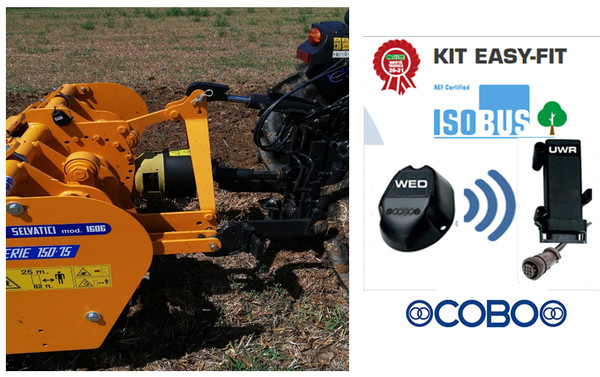
Selvatici brings ISOBUS on spading machines
Selvatici from San Lazzaro di Savena (Bologna) is showing at EIMA International the first ISOBUS-compatible spading machines, jointly developed out of a synergy between the Bologna-based manufacturer, Cobo, Landini-Argo Tractors and the Ideagri network. Equipped with Cobo's easy fit kit (EIMA 2021 technical innovation award), all 120.45, 150.75 AND 150.95 SERIES models will be able to dialogue with ISOBUS tractors to offer top-notch performance and ensure optimal use. As the manufacturer explains, "Two sensors - one on the implement and the other in the tractor cab connected to the ISOBUS socket, without any connecting cables- continuously and automatically exchange information. Specifically, the operator will be able to monitor feed rate, torque, engine and implement speed during operation in order to reduce fuel consumption and emissions. Real-time data on consumption l/ha and productivity of the spading machine ha/h will be provided, and an indicator will alert the operator when they are working correctly and with all parameters optimized. Furthermore, messages about the correct implement maintenance intervals will be displayed, further extending the service life of this machinery, which, moreover, is already designed for the most extreme working conditions. Further cooperation between Selvatici and Bertoni led to the developing of a subsoiler-rototripper (EIMA 2001 technical novelty award) for tillage. The implement is carried to the top link of the tractor, driven by the PTO, which consists of a different number of hooks (six in the model presented at EIMA International). Bolted to the end of the hooks, there are special knives positioned at a specific angle that helps their insertion into the soil. The machine's peculiarity is that these hooks are not fixed as in traditional subsoilers but are driven by a connecting rod-crank system that provides the tool with an ellipsoidal movement. Thanks to this bottom-up movement, which brings layers of fertile soil to the surface and mixes them with the surface layers that are already more exploited, thus improving soil structure, the ground is broken up much more finely than with the traditional ripper. The machine works at an adjustable depth via level wheels, typically ranging from 15 to 40 cm. The burying of post-harvest crop residues and grass is also significantly higher than with fixed rippers. Indeed, it can be said that the work of the rotary subsoiler is almost comparable to that of a traditional ripper at a working depth of 30-35 cm and a subsequent pass of finishing implement (tiller or harrow) because, - as Selvatici explains - it leaves the soil structure unchanged, but at the same time makes it even finer almost preparing it for the next sowing. Studies conducted by the University of Bologna have also shown that operating costs, fuel consumption and CO2 emissions of the rotary subsoiler are 30 percent lower than the combined use of a traditional ripper and hoe. At the same time, the operating speed - the Bologna-based manufacturer also claims - is 30 percent higher than that of a conventional spading machine of the same size. In short, the rotary subsoiler signed by Selvatici is an implement that combines the features of classic subsoilers with the reciprocating motion of spading machines. Currently available versions would be for widths of 135 - 160 - 180 - 200 cm and tractors with 50 to 100 horsepower.








